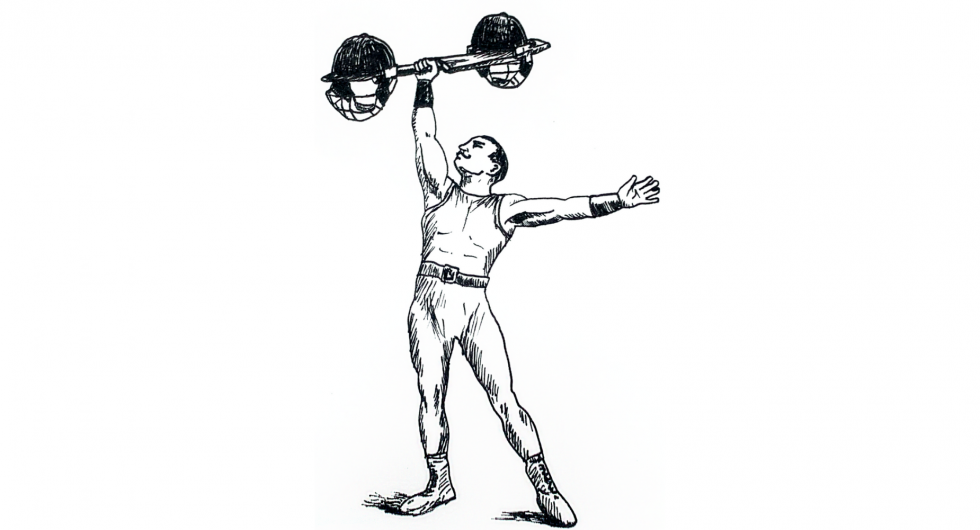How to get fit for the club cricket season, part two

For middle-aged clubbie Nick Campion, a strength and conditioning programme has helped keep him fit and performing at his optimum level. In the second of a two-parter he outlines how he stays fit through the duration of a whole season.
In a previous piece I outlined the programme for mobilising your body and coordinating your movements. Now it’s time to work on your strength. The programme below is necessarily general, so this is another moment where investing in a session with a qualified Strength and Conditioning coach (a member of the UKSCA) might be worth your while. If not, Google is your friend for filling in the details.
The following programme works every part of you, as well as further building on your skills, coordination and mobilisation:
In every strength session you do (minimum one session a week up to three or four), you need to do one exercise of:
- Upper body pull
- Lower body pull
- Upper body push
- Lower body push
- Core
Every session, do four sets of each. Find a weight to start with that you can do eight reps of, while keeping good form. After two sessions of doing sets of eight, move to 10. After two sessions of doing 10, go to 12. After two sessions of 12, move the weight up and return to eights, and so on.
There are scores of exercises within each of these categories. Here are some examples but find what works for you:
Upper body pull
- TRX row
- Bent over row
- Pull-ups
Lower body pull
- Deadlift – trap bar or conventional
- Hip lifts with weight
- Kettle bell swing
Upper body push
- Press-ups
- Kneeling shoulder press
- Bench press
Lower body push
- Lunges
- Squats
- Step-ups
Core
- Superman
- Spiderman
- Plank
*Don’t do sit-ups – do the exercises above, which create a strong column.
Whether you’re a batter, bowler or keeper (and we’re all fielders), this programme will work.
Apart from recovery time, age is largely irrelevant. Work to this programme and you’ll develop your strength and coordination. Gender too is largely irrelevant. Although there are obviously physiological differences, they are not significant at this level of training. Girls and women, just like boys and men, have a huge amount to gain from strength training.
Finally, get in the nets and build gradually from now – don’t try and get up to speed in just a few weeks or on the day.
Short of time?
Option 1: Create a decent warm-up programme of 10-15 minutes; this is also something you can do three or four times a week to groove rhythm, coordination and movement patterns.
Option 2: If you can find two hours a week and you don’t need too much corrective work, do two hour-long full-body strength sessions a week.
Reading this in March and thinking it’s too late? It’s not – focus on skipping, jumping, hopping and sprinting. This is what will help you maximise the strength you already have.
Warming up
You know the drill: arrive, wander out to look at the pitch, cup of tea for some, a fag for others, then maybe a bit of a jog, perhaps take the opportunity to get injured before the game even starts with a little football, then some half-hearted catching and throw-downs before resuming your seat until the clock ticks over to the start time, when you stand up, stretch the groin, swing the arms and stroll out on to the pitch, primed and ready for action. Or not.
Simon Brundish, S&C coach, explains:
“I’m not sure why people think a jog and a static stretch are going to prepare them for the explosive movements of fast bowling, sprinting a single, chasing a ball and throwing it in 60 yards.
“When you’ve finished your warm-up, you should be at or slightly above game intensity. Bowlers should be up to bowling speed – that point you usually get to in the middle of your second over when you feel good, in the groove. Your body temperature will be raised, muscles more elastic, you’ll have an increased range of motion. Remember, a fast bowler’s bowling hand is the single fastest-moving thing in sport: don’t underestimate the importance of being warm.
“Fielders and batters should be fired up and ready to sprint. Too many batters are afraid of being seen warming up to bat – don’t be; it gives you your best chance of playing well from ball one. You need to be in a heightened state of arousal in order to react to the quicks or move fast against spin.
So, what might your 15-minute warm-up look like?
- Engage your core: plank, spiderman, superman, hip lifts
- Mobilise your shoulders: floor angels, reverse foot shooters
- Skip, bound and jump
- Med ball slams, rainbows and rugby passes
- Finish with a cricket-specific action – a hand-eye coordination element relevant to what you’re about to do
- As you head out on to the field, do something explosive – maybe sprint 5-8 metres as fast as you can
Finish your warm-up within 10 minutes of the first ball or you’ll start to lose what you’ve gained.
What about if you’re called on to bowl for the first time after 25 overs and you’ve had an hour and a half to stiffen up?
The answer is prevention: if you’re a bowler, use the time between overs to skip and bound to help you keep as loose as possible in the shoulders and hips. Every couple of overs, run through your action. When you do get the nod, do some skipping and bounding to make sure hips, knees and back are fired up and ready to go. Then run through your action again.
Recovery
This is one of the few areas where age really is relevant. At 18, you can play 50 overs Saturday and Sunday and feel fine because cells regenerate so quickly. At 50, different story – although it is relative, depending how fit you are in the first place.
After the game, in an ideal world, you’d jump in an ice bath to minimise inflammation; apparently the research that debunked the ice bath theory has itself been debunked. Alternatively, put ice packs on painful muscles instead.
After a high intensity game, eat asap – carbs immediately and, within a couple of hours, some protein. If it’s been a hot day – above about 23 degrees – drink a litre of fluid for every hour you’ve been out there. Ideally it’s water but if it’s tea, it’s tea, and if it’s beer, it’s beer. Water’s best but beer is better than nothing. Perhaps have Carling and get the best of both worlds.
That evening, use a foam roller over all major muscles and across joints as it helps to undo the tightening of muscles that you’ve created from using them. Next day, do something light like a walk, then another roll and this is the good day for static stretching or a bit of Pilates.
During the season
Summer is not the time to be working through a strength programme like this – playing every week will be your focus. However, you can maintain the strength you’ve gained by lifting something equally as heavy as you did in the winter once a week.
Chris Tombs is an advocate of keeping the work ticking over during the summer. He says: “Your speed and strength qualities decay if you’re not using them. I always encourage players to do a little speed work – warm up, then do three to five 20-30m sprints, which help you maintain an important speed quality relevant to the game.”
Play more, play better, play longer
By the end of my Covid carpark adventure, I felt strong and ready and not quite all of my 48 years. Brundish commented:
“You improved really quickly and were able to develop a level of strength I wasn’t expecting and a little extra speed I wasn’t expecting. By the start of the season, you had a range of movement you probably hadn’t had for much of your cricket career, and a level of extra elasticity through the kinetic chains necessary to bowl.”
I know the new year is sickeningly full of smart-arses posting inspirational ‘If I can do it, then you can do it’ messages on social media but in all seriousness, I think this has potentially given me the opportunity to play more, to play better and to enjoy the beautiful game and the irreplaceable cricket dressing room for even longer.
The bottom line is, the work you do in the pre-season could help you play at the best level you can play, with a higher chance of success, and with that always comes more enjoyment. It’s got to be worth a go hasn’t it?

